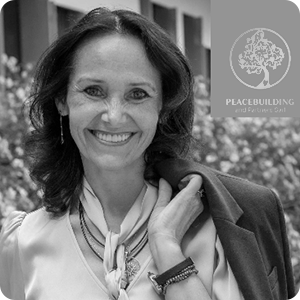According to the Global Humanitarian Overview 2022, 274 million people will need humanitarian assistance and protection this year. This number is a significant increase from the 235 million people a year ago which was already the highest figure in decades. At the same time, the United Nations and partner organizations aim to assist 183 million people in 63 countries which will require US$41 billion. What does this mean for developing countries? Check out some experts’ opinions below.
Key Takeaways:
- Years of wars, natural disasters, political turmoil, poverty and the COVID pandemic have left millions in need of humanitarian assistance.
- Some experts believe that the growing number of those in need is a sign that the international community has failed to address the root causes of humanitarian issues.
- Experts believe that hunger and a lack of hope in the future are pushing hundreds of people into the hands of extremists and armed groups in the hope that these groups can provide appropriate response to their needs.
- Emergency aid needs are set to rise by 17%. In most crises, women and girls suffer the most as gender inequalities and protection risks are heightened.
- According to experts, these numbers reveal that the gap between the rich and the poor has increased.
- Increased demands will force international donors to make hard choices and cut programs in some areas.
What is the impact of the increasing number of those in need on developing countries?

“Humanitarian assistance and protection are provided in humanitarian crises. As per the United Nations Office for the Coordination of Humanitarian Affairs (OCHA), these are generalized emergency situations affecting an entire community or a group of people in a region which involve high levels of mortality or malnutrition, the spread of disease and epidemics and health emergencies. Lack of clean water, food insecurity, lack of sanitation and shelter negatively contribute to these emergencies. Inequality, poverty and a lack of basic services do worsen this situation where people are in great need and highly vulnerable. There is a noticeable increase in events and situations that worsen already fragile conditions. These include political events such as armed conflict, coups, ethnic and religious persecution, environmental disasters like tsunamis, earthquakes, typhoons, severe weather patterns, health emergencies such as COVID-19 or Ebola, population displacement due to various reasons and hunger and malnutrition. If countries reach their coping mechanisms capacity and can no longer deal with the consequences then humanitarian aid is essential to meet the needs of vulnerable people and can be provided in the form of food aid, medical care, rebuilding infrastructure and more. Any activity that helps to reduce the number of victims would end the crisis and begin the period of development cooperation activities. For developing countries, the increasing number of vulnerable categories of people means higher pressure on budget and social services. I believe that the governments of poor nations will be forced to reshape their budgets and re-direct some of the funds initially aimed at development to urgent needs.”

“The significant increase in humanitarian and protection assistance in 2022, with an additional 39 million of people in need compared to last year, is a serious matter of concern. First, it is a signal that we, the international community, have failed to address the root causes that create humanitarian issues. Second, it reveals that the gap between the rich and the poor has increased, as more people are starving. Third, the war in Ukraine and its consequences will, unfortunately, worsen this already very challenging trend. The effects of this situation are multiple, but we can observe devastating images of young men and women, from Latin America, Africa or Asia risking their lives to migrate to western countries where they think they can have a better life. Additionally, hunger and a lack of hope in the future are pushing hundreds of people into the hands of extremists and armed groups in the hope that these groups can provide appropriate response to their needs. Finally, there is lack of trust in global governance, as words are not matching the facts. I think it’s urgent for decision-makers and the UN to consider this worrisome trend and take appropriate actions to bring more peace and stability, two critical factors that can enable communities to really work and take care of themselves and reverse the curve.”

“Humanitarian actors run medical and mental health projects assisting displaced people and those affected by crises. They also run important health projects for marginalized communities and people living in poverty. The second important role international aid plays in global health is in tackling pandemic outbreaks. Many countries do not have the resources to control disease outbreaks and require humanitarian assistance to do so. This has become a key area of help specially since the COVID-19 outbreak. Capacity building has also become a major part of the aid industry in recent years. One of the focuses placed by humanitarian aid agencies is on developing the skills, knowledge and resources of local actors so that they are better able to respond to future crises. Humanitarian actors ensure capacity building through several ways. These include partnering with local organizations, hiring national staff and delivering training.”

“Years of wars, natural disasters, political turmoil, poverty and the COVID pandemic have left millions of people in need of humanitarian assistance. International humanitarian spending dropped drastically due to the COVID situation worldwide. Today, in 69 affected countries worldwide, overall $46.35 billion is required for humanitarian needs whereas the total funding received equals US$10.23 billion which is highly insufficient to meet humanitarian demands. The emerging global challenges of inflation and climate change are bringing further consequences for the affected population. Increased demands will force international donors to make hard choices and cut programs in some areas. Early disbursals of funding in areas that are in dire need would further deteriorate the situation for affected people, particularly for whom aid is life-saving.”

“I think honestly several problems have been created. Some organizations pay extremely high salaries, so most of the future employees are motivated more by salary than by the humanitarian spirit. Most of the NGOs have only 6-month projects and, once achieved, there is no follow-up. The first contact point in an NGO, if you are looking for a job, is Human Resources who are mostly looking for young people, who have different motivation, such as it looks good on my CV. There will be no checking of achievements. General politics are not helping either as the general approach is first we destroy and after this we rebuild = 2x profit for the so-called developing counties. Actually, there are a lot of countries with chronic unrest = nobody wants to fix this as it easier to exploit the natural resources when there is no strong leadership.”
See also: The International Day of Charity. Challenges, responsibilities, perspectives | Experts’ Opinions
Check out more than 320 job opportunities in the Humanitarian Aid & Emergency sector here.

